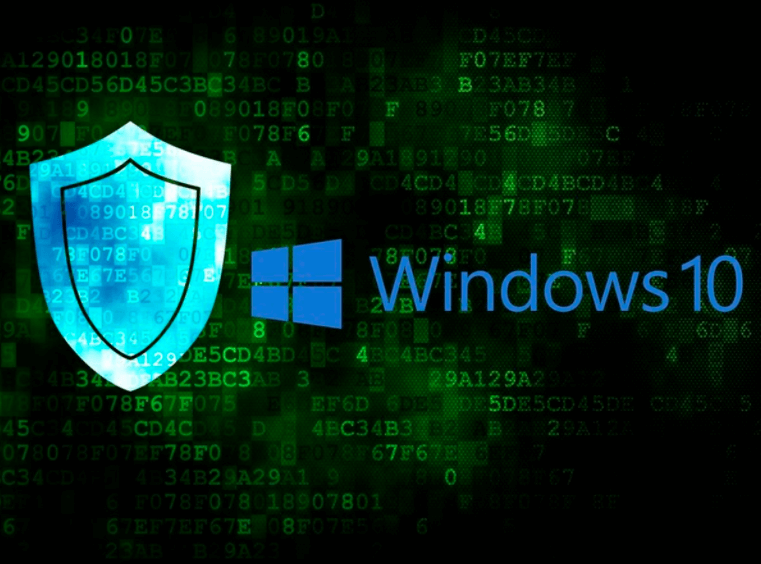Windows is the most popular operating system in the world, making it a major target for malicious hackers. Microsoft regularly adds updates for operating systems. But new features can make operating systems less secure. For example, Windows 10 comes with seamless integration with cloud-based OneDrive. It will make Windows 10 more active, but it can also open up new vulnerabilities. It makes Windows an ongoing task. With a little work, you can lock the privacy settings for Windows 10, but at the expense of some features. What you need to know is that Microsoft has turned Windows 10 into a desktop and cloud operating system. Improving cloud functionality means you’ll be sharing more information with Microsoft and its customers with Windows 10 than ever before.
For example, if Windows 10 doesn’t have a log, it collects hits and voices to improve spelling and speaking skills. Keep in mind that all software as a service (S-a-a-S) application in the cloud will do this to some extent before you run into this situation. Google Docs, Office 365, whatever – they collect not only your last words but all the keywords and speech recognition that came from creating those words. It is another problem with Wi-Fi Sense. You don’t have to worry about Wi-Fi Sense enabling Skype, Outlook, or Hotmail to use an unauthorized Wi-Fi network. Yes, Wi-Fi Sense is turned on by default, but check. It will not allow anyone to use your wireless network without your permission.
Ways to Secure Windows 10
Secure Installation
It is strongly recommended that you reinstall Windows 10 on your system. Be sure to turn off the system’s wireless Internet connection and turn off the Ethernet connection. Nothing causes more problems than the Windows operating system makes it vulnerable to exploitation and hacking. Microsoft is doing a good job of protecting your Windows from the latest threats, but you should be involved. Make sure that the installation of Windows has received the latest update package. Use Windows 10 Update Assistant to automatically install the latest solutions for your computer. You can also set the confirmation manually before adding the update.
Delete Unwanted Applications
Even newer installations of Windows 10 are likely to install unwanted programs on your systems. These programs magnify the face of the attack and become potential entry points for attackers. Review installed applications and delete them. Make sure all installed programs are legal, pirated software that can run with a magnifying glass and malware.
Encryption
Disks must be encrypted. Windows 10 has Bit-Locker as a built-in encryption solution, and the encryption process is simple. You must enable part of trusted platform encryption with Bit-Locker. Later versions of Windows 10 come with the trusted platform by default, which makes it less of a trouble to think about. Safe Boot should be used for encryption. It connects the hard disk to the system hardware and ensures that only Microsoft-approved hardware is used at startup. Encryption is required when storing important data on a laptop. You can lose your laptop. Even if a thief manages to steal your laptop, it is theoretically impossible for them to read your data. Most Windows 10 users can use simple tools to encrypt data.
Updates, Repairs and Maintenance Packages
Make sure your Windows 10 is up to date with all updates, updates, and service packs. An easier target for attackers is Windows 10, which is unaware of the latest updates and solutions or service packs.
Configuring the BIOS
Windows 10 has a basic input-output system (BIOS) as well as previous versions of Windows. Before working with the BIOS, make sure that your version of Windows 10 has a qualified BIOS configuration, and then configure it.
Enable The Guards!
Windows 10 has several built-in security solutions for various operating system components that use “protection” as an extension. Below is a list of “guards” who should be deployed to reduce the area of attack.
- Protect your device
- Privacy Officers
- Protect applications
- Usage prices
Get Rid of Unnecessary Services
Windows 10 includes a great number of services that organizations don’t want or need to work with. It should be noted that the system is designed for unreliable and pre-installed service.
Windows Defender
Microsoft had a free antivirus solution for Windows 10 that has no major vulnerabilities and works, unlike most free anti-virus solutions. Windows Defender should be enabled by default; to check this, open the Windows Defender dashboard.
Group Policy
This technology is too big to allow for a faster overview because organizations have their own special needs, and Windows has a great team spirit. Companies with IT departments typically have Group Policy settings for each new Windows 10. Windows 10 must follow this baseline on the first run. Keywords are a combination of group policies that are quite common in organizations. Password grouping rules should apply complex passwords and configure password reset spaces.
Ransomware Protection
Legalization needs to be strengthened as the level of attack could be obvious. The best way to do this is to set up multivariate authentication. It can contain a strong password as one element and a PIN, gesture, biometrics, or image password as another.
Use a Local Account
There are several benefits to using a Microsoft account to sign in to your laptop. However, when you sign in to your Microsoft account, all settings are automatically synced to all of your Windows 10 devices. It can pose a security risk, and in some cases, you may need to disconnect from Microsoft. If you are in a very secure environment, it is a good idea to use a local account instead of a Microsoft account.
Conclusion
Using the tips above will make your use of Windows safer. Browsing the web is easier, and you can always protect your personal information. However, one can obtain security and CompTIA A+ Certification training to get hands-on to secure the Windows. Though, make sure you have a regular Windows 10 security routine.
